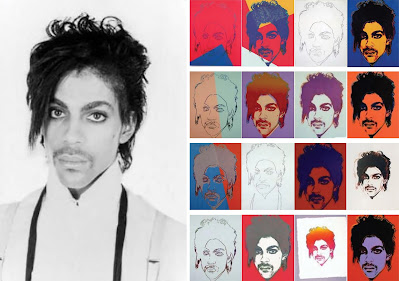Campbell's Soup History: 1898 - First red & white soup can label debuts after Dr. John T. Dorrance (a company executive) attends the annual Cornell-Penn football game and is impressed by Cornell’s new red and white uniforms.
The U.S. Supreme Court ruled on Thursday that artist Andy Warhol infringed on the copyright of a photographer when he created art using an image of the late musician Prince for a series of silk screens.
Justices ruled 7-2 againstWarhol's usage of the imagery.
Justice Elena Kagan said in a dissent that the opinion would "stifle creativity of every sort."
Warhol, who died in 1987, had his side represented by an attorney for his foundation. A key point in the argument on Warhol's side was that the image of Prince was altered or transformed so much that it should not infringe on any copyright.
WHY DOES DUTCH MASTERS USE THAT PAINTING?
When most people hear the phrase “Dutch Masters,” their thoughts will turn to those popular cigars found in every smoke shop and convenience store across the country. There is, however, another meaning behind “Dutch Masters,” and it involves that iconic artwork found on the cigars of the same name.
If you aren’t already familiar with the painting, it’s called The Syndics of the Drapers’ Guild (De Staalmeesters). It depicts a group of men known as drapers, who were responsible for determining the quality of cloth that was for sale. More importantly, it was painted by Rembrandt Harmenszoon van Rijn, who is better known simply as “Rembrandt” for obvious reasons. If this (abbreviated) name rings a bell, it’s because he’s recognized as one of the most talented among his contemporaries, who are commonly known as—you guessed it—the Dutch Masters.
That’s right, this semi-obscure 17th century painting is being used on Dutch Masters packaging as a nod to the artistic geniuses they named themselves after. These original Dutch Masters included many names beyond Rembrandt, including Johannes Vermeer and Hieronymus Bosch. These painters made such an impact on the world of art that their era became known as the Dutch Golden Age. Not a bad group to name your cigars after.
The Syndics of the Drapers’ Guild has been used on Dutch Masters packaging since 1911, and it has become so recognizable that it’s hard to imagine it going away anytime soon. Besides, why would you want it to? It’s not every day that a marketing team is able to take a piece of classical artwork and make it work for their product.
- Rembrandt van Rijn (1606-1669)
- Johannes Vermeer (1632-1675)
- Pieter Brueghel the Elder (c. 1525-1569)
- Jan Steen (1626-1679)
- Hieronymus Bosch (c. 1450-1516)
- Lucas van Leyden (1494-1533)
- Frans Hals (1580-1666)
- Hendrick Terbrugghen (1588-1629)






